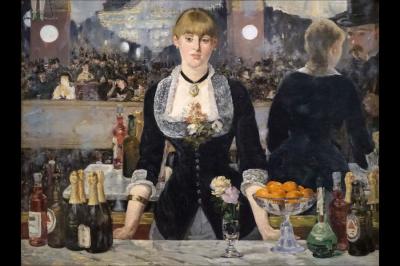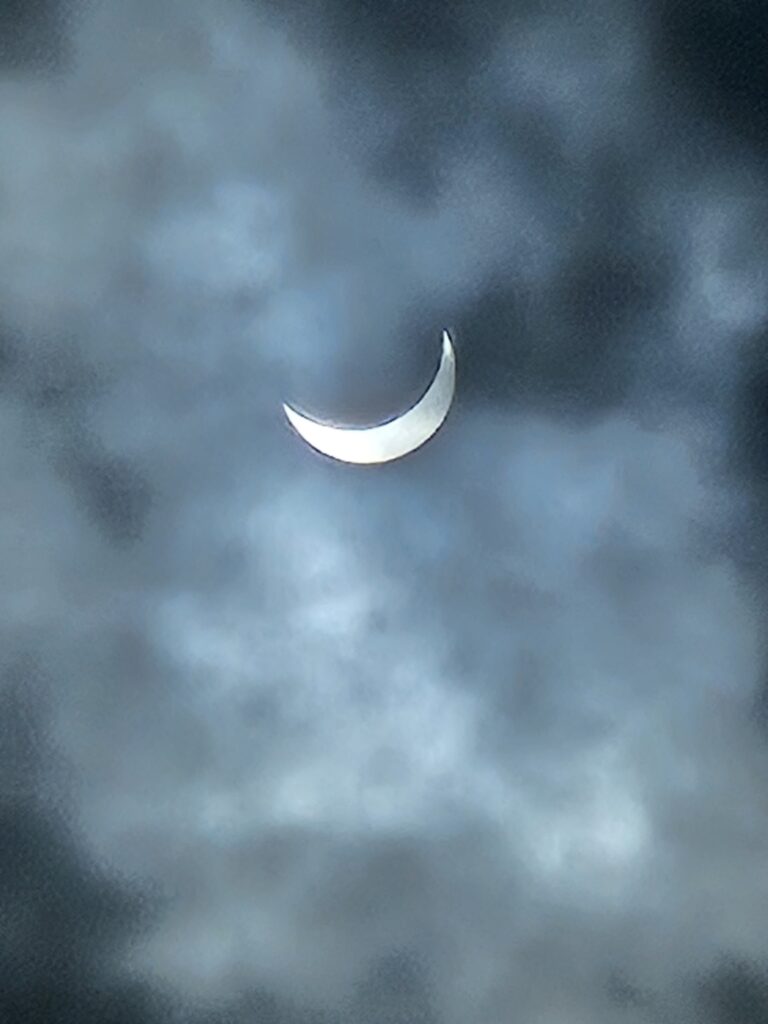Penny-Lynn Cookson
Special to The Lake Report
Oh, to be in Paris at the Folies-Bergère, home of opera, dance, comedy and acrobatics. Built in 1869, it was the most popular music hall of variety entertainment and social gathering for the Parisian middle and upper classes.
In 1892,Édouard Manet created his last major work, “A Bar at the Folies-Bergère,” one of the most controversial, disparaged and admired paintings of all time. Why? Its composition doesn’t make sense. Or does it?
A young barmaid stands at a balcony marble countertop gazing out at us, her face expressionless, otherworldly, detached. Before her are arranged bottles of gold-foil topped champagne, wine, English ale (German beer unpopular due to the 1870/71 Franco-Prussian War), and a single bottle of green absinthe, the “Green Fairy” known for its properties of liberation and altered perceptions.
Behind her a gold-framed mirror takes up the entire width of the painting. We see, looking into the mirror, what she sees as she looks beyond us into the interior of the space.
Three large, gaslit crystal chandeliers and numerous new electric globe lights are mounted on columns before more reflecting mirrors. The balcony across the room is full of seated and standing patrons engaged in seeing and being seen. Hazy smoke rises from the lower level. At the top left dangle the legs and feet of a trapeze artist whom no one is watching. This is theatre life, the buzz of the crowd, the clink of glasses, the background music.
The young blond woman with her fringe, stands straight, wearing a dark velvet jacket with a lace collar and cuffs, a cameo locket, gold bangle and pearl earrings. To the right, we see her back reflected in the mirror as she leans slightly forward to a man in a top hat. He appears to look past her. Is she taking his request, or is he propositioning her for a liaison?
Bar attendants at the Folies-Bergère were known to offer other services and Manet includes on the bar a bowl of oranges, his symbol for prostitution. It is the off-kilter position of the reflected pair that disturbs and has been criticized since the Paris Salon viewing of 1892. Other ambiguities include the bottles positioned inaccurately in the mirror.
Manet toys with repeat triangles: the large chandelier, the yellow gloved arms of an onlooker, the hem of the young woman’s jacket, her red corsage, the red triangles of the Bass ale logo, a corporate first in art history long before Andy Warhol’s Brillo pads and Campbell Soup tins. In addition, Manet signs his name and the vintage date on the wine bottle label.
Was the criticism of the composition justified? No. Photography has proved the positioning works if the viewer/customer does not stand centre to the woman but far offside. The viewer might be the man almost out of the frame. The painting is a masterpiece of symbolic relationships and the dislocation between reality and illusion. Modern art begins with Manet.
Penny-Lynn Cookson is an art historian who taught at the University of Toronto for 10 years. She also was head of extension services at the Art Gallery of Ontario. See her lecture series “Art and Revolution, From Cave Art to the Future” Thursdays on Zoom until April 29 at RiverBrink Art Museum in Queenston.










